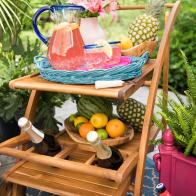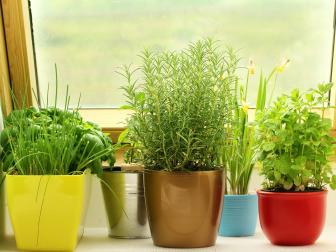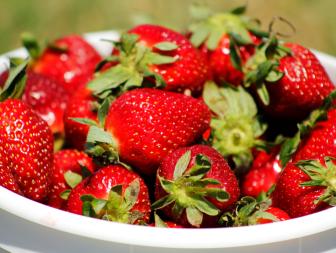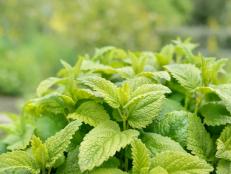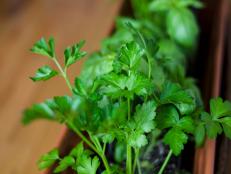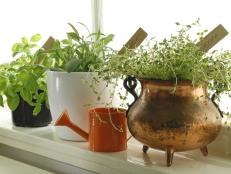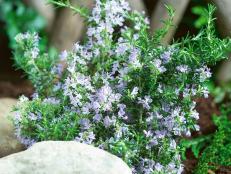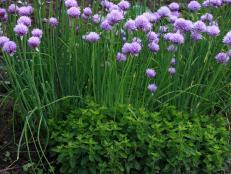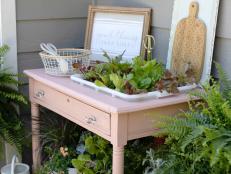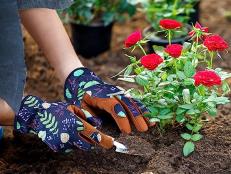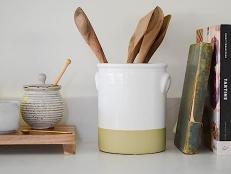How to Plant, Grow and Harvest Tarragon
Tarragon adds richness to a variety of dishes. Learn how to grow this flavorful herb — and its substitute, Mexican tarragon — in your own garden.

When you reach for the fresh tarragon to add to your recipe or you're planting the seedling from the garden center, which tarragon are you choosing: French (Artemisia dracunculus)? Or Mexican (Tagetes lucida)? The leaves have the same licorice/anise flavor, and they are both members of the family that also includes sunflowers. Beyond that, the two are quite different, and the one you choose for your garden may depend on where you live.
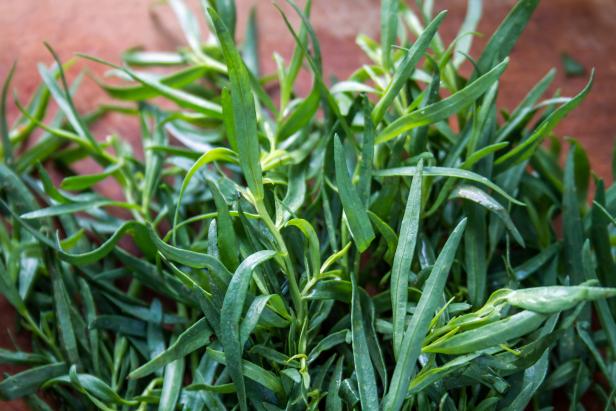
Shutterstock / Moisieiev Igor
French tarragon, Artemisia dracunculus, is a classic herb in French cooking, lending its rich flavor to meat, fish, eggs, sauces and dressings.
The Two Types of Tarragon
In culinary circles, French tarragon (Artemisia dracunculus) is considered the gold standard, the “true” tarragon. It’s the herb that adds its rich flavor to chicken dishes, sauces, soups and salad dressings. It’s native to central and eastern Europe and southern Russia, where it enjoys a temperate climate. In the garden, French tarragon is a perennial herb with slender leaves and small green, sterile flowers. The plant spreads by rhizomes that creep underground, and it grows and spreads best where it's not bothered by excessive heat and humidity.
Mexican tarragon (Tagetes lucida), whose leaves have the same flavor as French tarragon, is native to Mexico and Central America; in fact, Mexican tarragon also goes by the name Mexican mint marigold. Because of its tropical origins, it is often grown as an annual in most of the US. Mexican tarragon may bloom lightly in spring, followed by a fuller bloom of yellow flowers that resemble more “traditional” marigolds in late summer and early fall. In a garden where annuals are killed by frost, it may reseed and grow the following spring. In the kitchen, the leaves are considered an excellent substitute for the real thing.
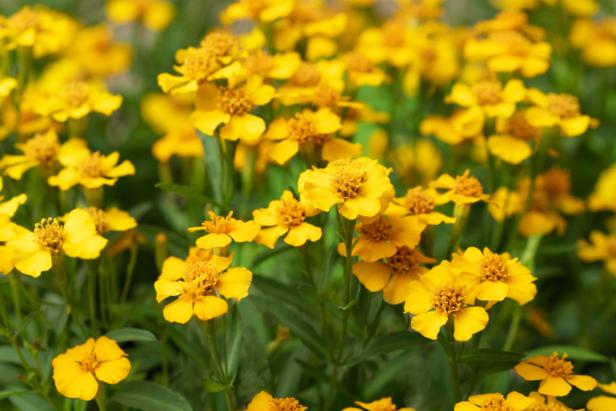
Shutterstock/AmyLv
Mexican tarragon, Tagetes lucida, has the same flavor as "true" tarragon, but it grows better in a warmer, more humid climate.
There is a third variety called Russian tarragon (A. dracunculoides), but with its taste described as bitter or grassy, it is not usually considered for culinary use.
How to Grow French Tarragon
French tarragon (also known as estragon) is not grown from seed, so start with nursery plants or divisions. In early spring, choose a location in full sun or light shade and plant in loose, well-drained, fertile soil. Whether you’re putting in new starts or dividing established plants, space them about 12 inches apart in each direction.
Water young plants every couple of days if there is no rain in your area; established plants can go a bit longer without watering. But be careful not to overwater. Too much moisture can cause the leaves to be less flavorful, and roots growing in soil that is always soggy may rot.
Tarragon in a garden generally doesn’t need fertilizer. Frequent pruning to use in cooking throughout the season encourages new growth. Fully grown, a French tarragon plant can reach 2-3 feet tall, covering about 12 inches of ground.
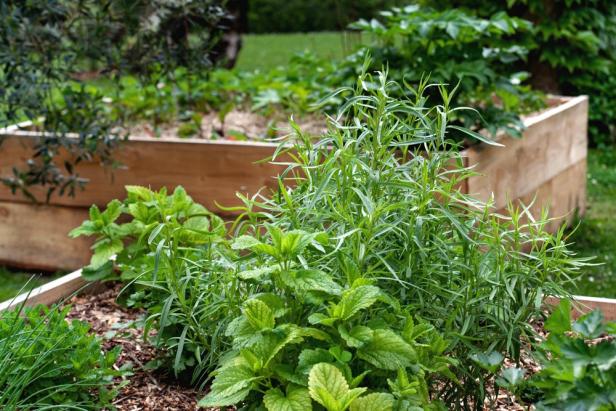
Shutterstock/redzen2
French tarragon is generally a mild-mannered companion to most everything in a garden and grows well alongside other herbs that share its light and water requirements.
While French tarragon doesn’t mind a bit of cool weather, it doesn’t do well in very high heat and humidity. For that reason, gardeners across the southern US may prefer to grow Mexican tarragon.
How to Grow Mexican Tarragon
Mexican mint marigold, aka Mexican tarragon, Spanish tarragon or winter tarragon, can be planted from seed, either sown in the soil after the danger of frost is past, or started indoors to be planted out in spring.
In the garden, plant seeds in full sun or light shade about 1/8 inch deep in clusters 12 inches apart, and thin when the sprouts are 1 inch tall to one plant every 12 inches. Seeds should sprout in about two weeks or less, and the plants can grow 2 to 3 feet tall and wide. Water when the soil is dry, but don’t overwater.
Mexican tarragon is considered a tender perennial, and should be green all year in USDA Hardiness Zones 9–11; gardeners in Zone 8 may see it nipped to the ground, but it may return in spring. Further north, it is recommended to treat this herb as an annual, but one that may reseed.
Tarragon is generally a mild-mannered companion to most everything in a garden and grows well alongside other herbs that share its light and water requirements, but be aware that Mexican tarragon/Mexican mint marigold can grow quite large and shrubby.
A–Z Advice for Companion Planting in Your Vegetable Garden 16 Photos
Find detailed info and links for specific companion plants and planting techniques for popular vegetable garden crops in our alphabetical list, from beets to zucchini.
Tarragon for Container Gardens
Both French and Mexican tarragon can be grown in containers indoors if there is a suitable light source, or on a balcony or deck, where the flavorful leaves can be snipped as needed.
Make sure the container is large enough and allows good drainage. A pot that is 10 to 12 inches deep and wide is recommended. The roots of French tarragon grow quickly, and the plant will likely need repotting every two or three years. Use a good potting mix that also allows good drainage so roots won’t become waterlogged. Allow the soil to dry between waterings.
Plants growing indoors need six to eight hours of sunlight. Indoors and in containers, tarragon benefits from a light application of fertilizer every few weeks.
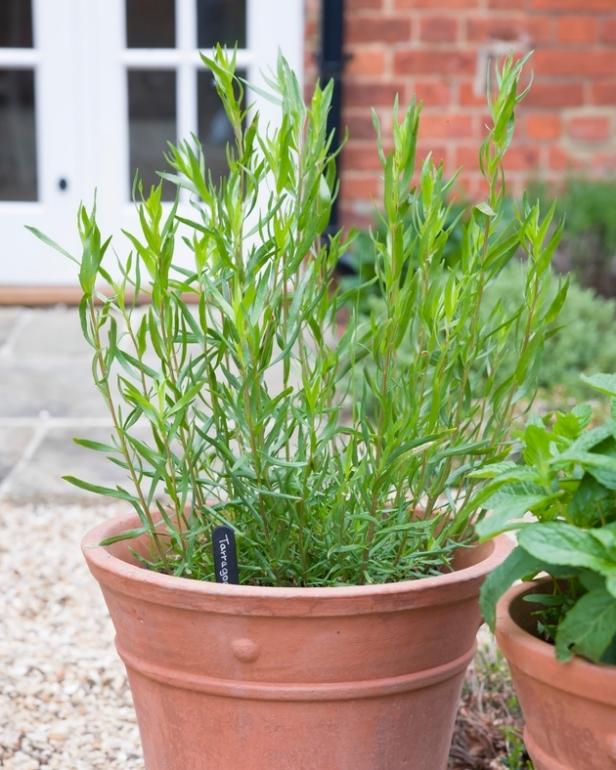
Shutterstock/Paul Maguire
Even without a garden, you can enjoy fresh herbs. French tarragon, Artemisia dracunculus, can be grown in a container on a deck or balcony.
How to Harvest + Preserve Tarragon
Once the plant reaches a suitable height, around 6 to 8 inches, you can begin to use the aromatic leaves. Use scissors to snip the leaves of tarragon when needed for cooking.
It’s best to use the leaves fresh, but they can be harvested and dried, though they lose flavor during the drying process. Cut long stems of tarragon and remove enough of the bottom leaves so that you can tie a few stems together and hang them upside-down in a dry, warm place. They should dry in about two weeks. Store dried tarragon in an airtight container.
Tarragon leaves can also be chopped and packed into ice cube trays with a little water and frozen. Store the frozen cubes in a freezer bag, and use the frozen herbs within a few months.
How to Use Tarragon
Besides using tarragon to flavor chicken, fish, meat and eggs, along with the classic French sauces Béarnaise and Hollandaise, tarragon has a variety of other culinary uses. Some ideas:
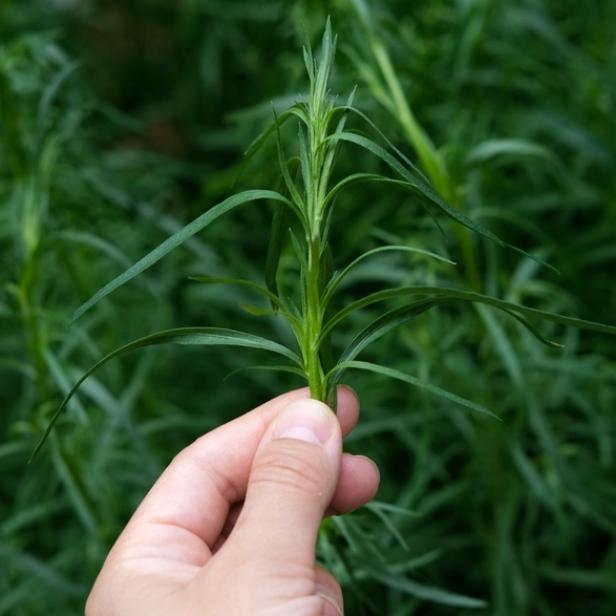
Shutterstock/Podolinskaya Yulia
Harvest tarragon as needed by clipping or pinching leaves and sprigs.
Mix your own herbes de Provence, the classic mixture of Provencal summer herbs that includes basil, bay leaf, marjoram, oregano, rosemary, savory, tarragon and thyme.
Make tarragon vinegar: steep bruised tarragon leaves in white vinegar for several days, strain the leaves, and use the vinegar as salad dressing on its own or in other dressings and recipes.
Blend tarragon with olive oil to drizzle over vegetables.
Enjoy the possible health benefits of tarragon in your diet. Studies show that tarragon may have the potential to reduce blood sugar, pain and inflammation, and improve sleep, appetite and heart health.
How to Plant a Kitchen Herb Garden
Herbs are easy to grow, they don’t take up a lot of space and they are a healthy way to add more flavor to your cooking. Whether you’re a beginning gardener or looking to elevate your culinary skills, an herb garden is the way to go.
Can You Freeze It? 35 Photos
Find out how to freeze fruits and vegetables such as bananas, watermelon, apples and avocados as well as some surprising things you maybe didn't know you could freeze like eggs and milk.

%20Taniya%20Nayak,%20Ty%20Pennington,%20Alison%20Victoria,%20and%20Brian%20and%20Sarah%20Baeumler_BOTB_HGTV%20.jpg.rend.hgtvcom.196.196.suffix/1683310636672.jpeg)


